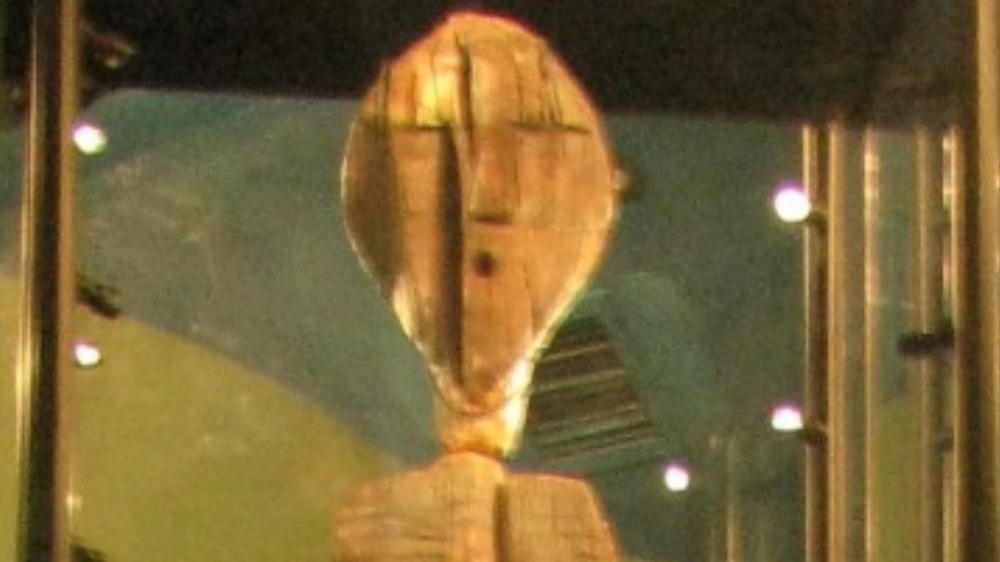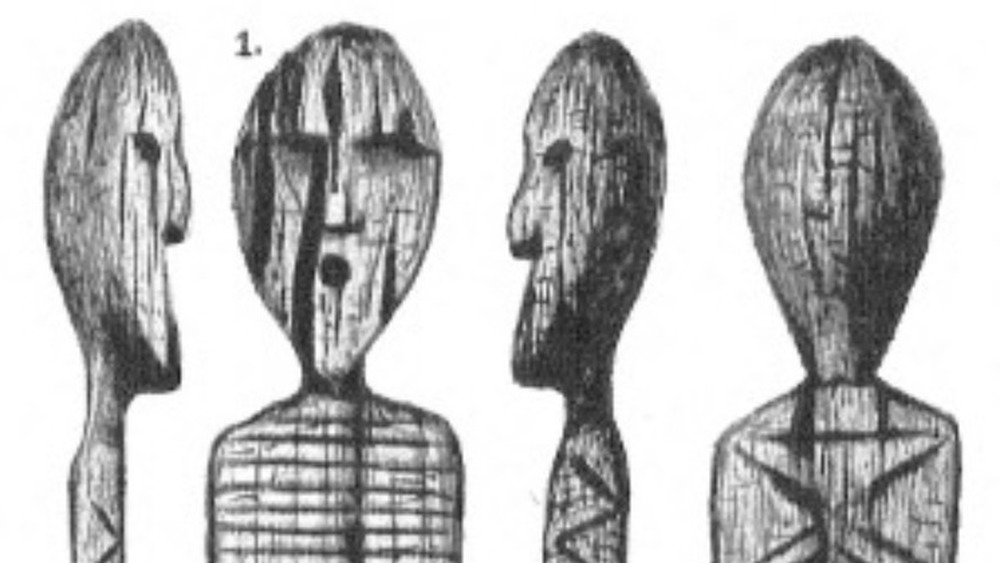Why The New Findings On This Wooden Sculpture Are So Significant
Our hunting and gathering predecessors may have been more complex than we realized. It's hard to really know what was in the minds of humans who lived 10,000 years ago or more, but that doesn't stop scientists from trying to understand the evolution of societies and human behavior from way, way back in the day. Fortunately, there are a few clues still scattered around the planet and modern day technology is a great tool for helping to solve some of those mysteries.
One such example is that of the Shigir Idol, a nine-foot tall wooden carving discovered in a Russian peat bog in 1890 by gold miners. According to the New York Times, in 1997 radiocarbon dating found the idol to be 9,500 years old. In 2014 technology called accelerator mass spectrometry that measured the core of the carving discovered it was actually 11,600 years old, but the more recent testing has found the idol to be the "earliest monumental wooden sculpture of the world," according to a study published in Quarternary International (posted at Science Direct), at 12,500 years old.
What that means is that the Shigir Idol is twice as old as Stonehenge and the Egyptian Pyramids, and proves that early humans were perhaps deeper thinkers than they are given credit for, because the idol incorporates abstract and ritualistic designs.
According to the authors of the study, "The figure demonstrates a complex expression of symbolic behavior and art of hunter-gatherers at that time."
Hunter-gatherers may have been as intelligent as modern humans
While this finding is unparalleled, according to the authors of the study, it makes sense that most things made of wood wouldn't last the thousands of years it would take for modern humans to discover them, but as a paleoanthropologist at the University of Barcelona, João Zilhão, told the New York Times, just because there is little evidence after all this time of early humans having abstract thought, it doesn't mean they didn't.
Zilhão said, "It's similar to the 'Neanderthals did not make art' fable, which was entirely based on absence of evidence. And then the evidence was found and the fable exposed for what it was. Likewise, the overwhelming scientific consensus used to hold that modern humans were superior in key ways, including their ability to innovate, communicate and adapt to different environments. Nonsense, all of it."
According to Art Net, the complexity of the icon's various designs challenges what archaeologists thought they knew about hunter-gatherers in Asia and Europe, as this particular work of art is believed to have ritual significance beyond simple paintings of animals on cave walls.
Archaeologist Professor Thomas Terberger, of Göttingen University told The Guardian in 2018, "We have to accept that hunter-gatherers had complex rituals and were capable of very sophisticated expression of ideas and art. These things didn't start with farmers, they began with hunter-gatherers much earlier."

